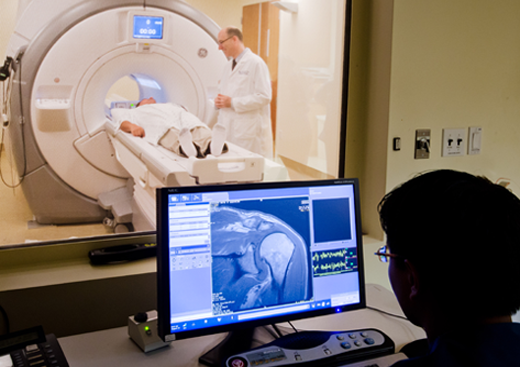Study Shows Patients’ Preferences for Radiology Reports, Physician Communication
 When it comes to receiving their imaging results, who do patients want to hear from and what information are they interested in receiving? Determining patient preference was the goal of a recent survey I co-authored.
When it comes to receiving their imaging results, who do patients want to hear from and what information are they interested in receiving? Determining patient preference was the goal of a recent survey I co-authored.
Our report found that most patients want to receive imaging results directly from the doctor who sent them for scans, but many also want to see their radiology reports. Our research, as published in the Journal of the American College of Radiology and later reported by Reuters, Fox News and Business Insider, found that patients like to have access to the medical information that informs their care, and the radiology report is a crucial piece of that information.
My colleagues and I offered surveys to almost 2,500 adults undergoing computerized tomography (CT) or magnetic resonance imaging (MRI) at two hospitals over a four-week period. A total of 617 surveys were completed, for a response rate of 25 percent.
Nearly two-thirds of participants said they preferred to receive their scan results from the doctors who sent them for the test. This method of communicating reports is typically the standard practice among most medical practices today. About one-third said they would prefer direct communication with the radiologist either in person or by phone. When surveyed about whether participants would rather receive results from an expert they already had a relationship with or from an expert in reading scans who they had never met, 82 percent preferred the doctor with whom a relationship already existed.
A large majority of the participants were interested in receiving their radiology reports, while only 36 percent of respondents were okay with solely receiving communication from a physician. This isn’t surprising; today’s patients are often educated when it comes to their health care, and desire access to medical information through a variety of channels. Full radiology reports are a key part of that medical information.
It’s possible that patients who want to see the reports may find they are difficult to understand. Imaging reports were originally intended as communication between physicians, focused mainly on the results revealed by the images; radiology reports rarely offer a simple message or any details about treatment.
Some places are experimenting with offering two versions of radiology reports - one for physicians and one for patients. These 'dual reports' can sometimes help patients understand that a trained physician is reading their imaging and is available to help them understand what the test showed. Even if the report were completely understandable, though, the next step in the patient's care is not part of the radiology report, so patients would still need to contact their physicians to learn what should happen next.
Our research shows us that patients do prefer to receive their imaging results through their referring providers, but many patients would also like to view their images and receive copies of their reports, potential avenues through which radiologists could add value.
For more information on the role of radiologists, please refer to this video!
